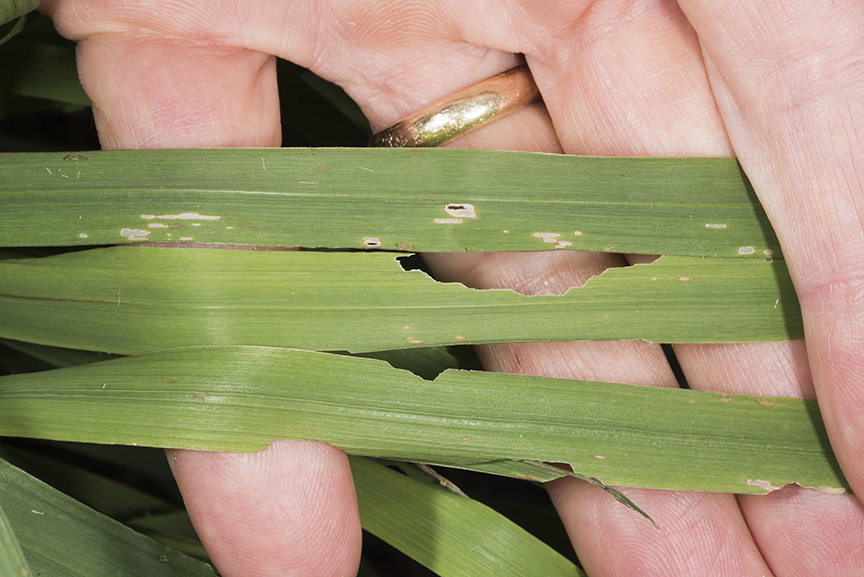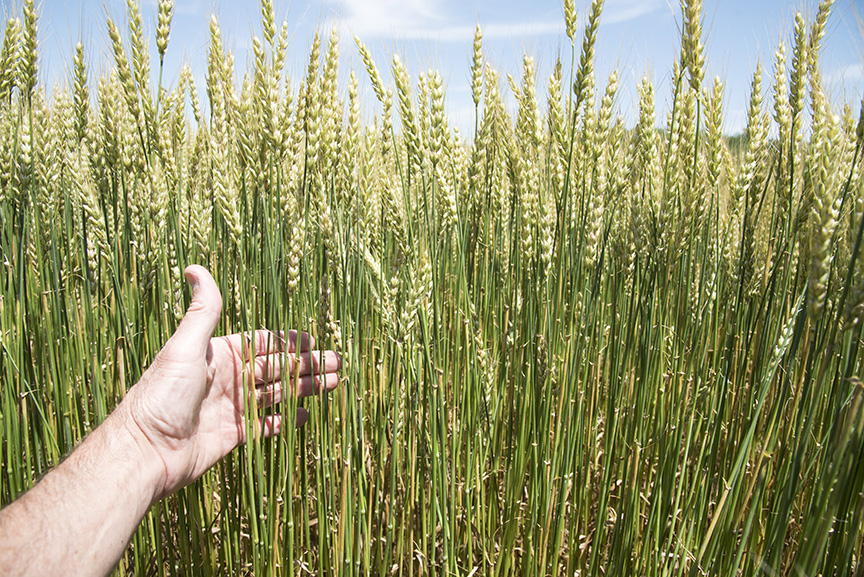Armyworm moth captures have varied throughout the state (see “Armyworm Pheromone Trap Report”). As I observed last week in Tippecanoe County, when larvae are small, their damage is negligible and easily overlooked. Now, and for the next week or so, is when high-risk crops should be monitored. Moths prefer to lay their eggs on dense grassy vegetation (e.g., wheat, grass hay, and grass cover crops). Larval development, except in extreme northern counties, should now have advanced to the point that fields should be assessed for feeding damage.
Corn – Corn that has been no-tilled into, or growing adjacent to, a grass cover crop (especially cereal rye) should be inspected immediately for armyworm feeding. Hatched larvae will move from the dying grasses to emerging/emerged corn. Armyworm feeding, done at night, gives corn a ragged appearance, with feeding extending from the leaf margin toward the midrib. When larvae are numerous and/or large, damage may be so extensive that most of the plant, with the exception of the midrib and stalk, is consumed. A highly damaged plant may recover if the growing point has not been destroyed. If more than 50% of the plants show armyworm feeding and live larvae less than 1-1/4 inches long are numerous in the field, control may be necessary. Larvae greater than 1-1/4 inches consume a large amount of leaf tissue and are more difficult to control. If armyworm are detected migrating from border areas or waterways within fields, spot treatments in these areas are possible if the problem is identified early enough. Don’t rely on Bt-corn for protection, as all are vulnerable to armyworm damage.
Wheat & Grass Pasture – Examine plants in different areas of a field, especially where plant growth is dense. Look for flag leaf feeding, clipped heads, and armyworm droppings on the ground. Shake the plants and count the number of armyworm larvae on the ground and under plant debris. On sunny days, the armyworm will take shelter under crop residue or soil clods. If counts average approximately 5 or more per linear foot of row, the worms are less than 1-1/4 inches long, and leaf feeding is evident, control may be justified. If larvae are present and they are destroying the flag leaves or the heads, treat immediately.

Forage grass damaged by small armyworm, ranges from leaf scraping to marginal leaf notches.

Completely defoliated wheat by armyworm larvae.


